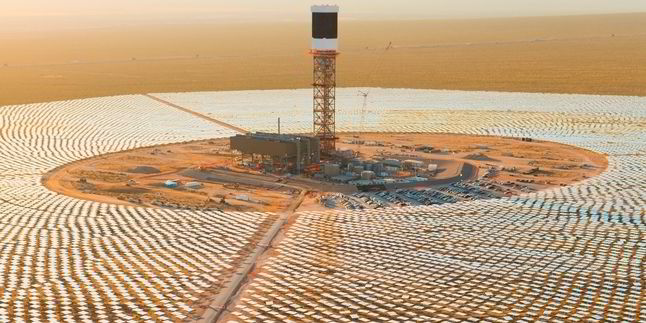The Huanghe Qinghai Delingha Solar Thermal Power Generation Project (Delingha), which involves the first 135MW tower with storage, was one of 20 projects selected for demonstration.
BrightSource, based in Oakland, California, will hold a minority stake in the project, which will utilise dry cooling technology that reduces water usage by more than 90% versus conventional cooling methods, according to the company.
Huanghe Hydropower Development, a subsidiary of the China's State Power Investment Corporation, will be majority owner.
The announcement follows the National Development and Reform Committee’s publication of the CSP pilot programme feed-in-tariff (FIT) of 1.15 Yuan/kWh ($0.17/kWh) on 1 September.
“China recognises the integral role concentrated solar power with storage can play in reducing emissions while helping to ensure long-term grid reliability,” said David Ramm, chief executive of BrightSource Energy. “This pilot program is of unprecedented scale and will drive cost reductions throughout the CSP supply chain, increasing solar thermal’s competitiveness around the world.”
The pilot programme represents years of coordinated effort from China and the United States and comes one week after the US and China ratified the Paris Climate Accord.
“Climate change has become a pillar of the US-China bilateral relationship,” said US Ambassador to China Max Baucus. “China’s solar thermal pilot program will serve as an enduring legacy of the partnership between two countries to advance technologies that help to achieve global clean energy and climate goals.”
Recognising the value of CSP, China adopted an increased goal for the deployment of 10GW of CSP with thermal energy storage by 2020 in its most recent five-year plan.
One goal of the pilot programme is to evaluate different technologies. To accomplish this, projects are expected to be operational by the end of 2018.
Only pilot CSP projects approved this year by the NEA are eligible to receive the NDRC tariff. In the future, the government will adjust its tariff policy as projects are deployed, performance is evaluated, and cost reductions are achieved.

